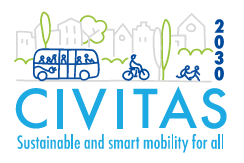The news comes in spite of assurances from EIB President Werner Hoyer during a press
conference last week in Brussels that corruption allegations would be scrutinised before
any further payments to the project are made. Despite Hoyer’s commitments, the money will be paid before the European Anti-Fraud Office (OLAF [4] has
completed its investigation into allegations of corruption about the awarding of the
constructing contract for the new plant to Alstom, the French infrastructure
conglomerate. Additionally, the public has yet to be informed about the outcomes of
similar internal investigations at the EIB and EBRD [5].
“This is all really bad news for Slovenia,” comments Barbara Kvac from Slovenian NGO
Focus. “This plant alone will take up almost all of the allowed emissions for our country
if we align to the EU 2050 climate goals. It is ironic that the bank of the European
Union is lending Slovenia money that will make reaching EU objectives more difficult, and it is sad that in Slovenia we cannot count on coherent, positive cues from our country for Brussels.”
“Since the EIB approved its loan in 2007 and the EBRD followed in 2010, Sostanj has
become a huge scandal that has followed the banks. Despite the damaging climate impact, the embarrassing corruption scandal and the questionable economic viability of the project, the EIB and EBRD signed the deal with the Slovenians and couldn’t see itself pulling out,” said CEE Bankwatch Network’s Pippa Gallop. “But the EIB and EBRD are the first institutions that should be courageous enough to pull out if a deal is deficient: they are public banks, meant to uphold European goals. Last time I checked, pollution, corruption and dubious economics were not EU objectives.”
Coincidentally the disbursement follows the release of a new report by the Health and
Environment Alliance “The unpaid health bill – how coal power plants make us sick,” which provides the first-ever calculations of the effects of coal-fired power generation on chronic lung disease and some heart conditions.
“The findings of the report come as no surprise, since Greenpeace issued a report with
similar findings already in June 2012. HEAL’s report confirms the worst. The TES 6
project will lock Slovenia into a fossil-fuel intensive future for the next 40 years, and
this could eat up around 9 billion euros of taxpayers money in the form of health costs
associated with air pollution from coal power plants. If we add the possible risks that
this project brings with its bad economics and vulneribility, this number could be even
much higher,” said Nina Štros, head of Greenpeace CEE in Slovenia. „It is outrageous that the EIB would rather protects its own interests and the interests of the investor rather than working towards what it was established for: creating a better and safer future for all Europe’s people.”
Notes for the editors:
1. http://www.eib.org/infocentre/press/news/all/eib-and-ebrd-to-support-completion-of-tes-thermal-power-plant-sostanj-project.htm
2. 110 million euros have already allegedly been paid out by the EIB in 2011 according to media reports. http://www.eib.org/projects/pipeline/2006/20060319.htm
3. http://bankwatch.org/our-work/projects/sostanj-lignite-thermal-power-plant-unit-6-slovenia
4. http://bankwatch.org/publications/olaf-decision-investigate-corruption-tes-6
5. http://bankwatch.org/sites/default/files/StateCommissionReport-corruption-TES6-23Feb2012.pdf
For more information contact:
Lidija Zivcic,
Focus Slovenia
Email: [email protected]
Mobile: +386 41 291091
Nina Stros, Head of Greenpeace CEE in Slovenia
Email: [email protected]
Mobile +386 40 871 530






